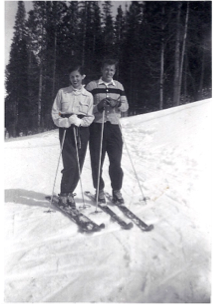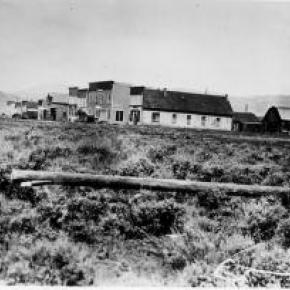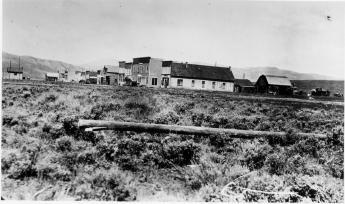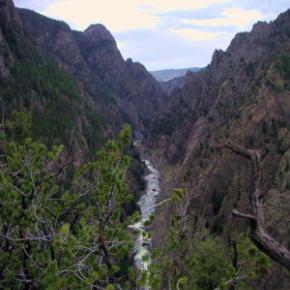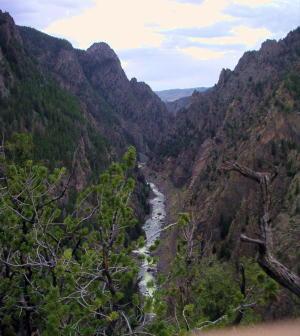People Articles
| Ranger Stories - Wildlife in Middle Park |
Ranger Stories - Wildlife in Middle Park
“He spent the winter of 1886-87 in Middle Park, Colorado … and succeeded in killing three grizzlies, two mountain lions, and a large number of elk, deer, sheep, wolves, beavers and many other animals.” The above is one of the earliest reports of wildlife in Middle Park. It comes from John Wesley Powell in his book The Exploration of the Colorado River and its Canyons, where he describes local trading post owner Jack Sumner, who accompanied him on their 1869 trip through the Grand Canyon. Forest Service wildlife reports date back at least to 1913. At the end of each year rangers and forest supervisors were required to submit a report on the status of wildlife in their districts and forests. Thanks to the diligence of Sulphur Ranger District wildlife biologist Doreen Sumerlin and her predecessors, those original reports dating from 1913 to 1939 have been retained and protected. They were scanned by the Grand County Historical Association and added to the permanent collection of historic documents in the Pioneer Village Museum. These reports provide fascinating insight into the perceived issues and approach to wildlife management practiced by wildlife managers in previous decades as contrasted with wildlife management today. In the early days of the Forest Service and state wildlife agencies the focus was on providing game for hunters – elk, deer, grouse – and removing any predators perceived to be a threat to those species and to ranchers’ livestock. The following excerpts from ranger reports exemplify this approach.
Ranger Stories: Wildlife in Middle Park Wolves October 29, 1913, Only three wolves have been reported on the Forest …. An especial effort will be made by the Forest Hunter to exterminate these three and it is hoped that losses to the stockmen in North Park from this source will cease. Wolves are on the decrease and it is felt that the total extermination will occur within a few years. -Alva Simpson, Forest Supervisor October 23, 1914, Only one wolf is now reported – the famous “Three Toes” upon whose head an enormous bounty is placed. Being a male, no increase will result unless he finds a mate. The loss from this one wolf is enormous, one cattleman losing last winter eleven head of blooded stock valued at $1,000 or more. Although very wise, the end will come and it will be a pleasure to report his death. -Alva A. Simpson, Forest Supervisor
October 29, 1913, Only three wolves have been reported on the Forest …. An especial effort will be made by the Forest Hunter to exterminate these three and it is hoped that losses to the stockmen in North Park from this source will cease. Wolves are on the decrease and it is felt that the total extermination will occur within a few years. -Alva Simpson, Forest Supervisor October 23, 1914, Only one wolf is now reported – the famous “Three Toes” upon whose head an enormous bounty is placed. Being a male, no increase will result unless he finds a mate. The loss from this one wolf is enormous, one cattleman losing last winter eleven head of blooded stock valued at $1,000 or more. Although very wise, the end will come and it will be a pleasure to report his death. -Alva A. Simpson, Forest Supervisor
October 12, 1914, Horseshoe Ranger Station, Scholl, CO, There are a few lynx on the district. Gus Champier told me that he trapped three last winter. One was seen this fall near the head of Lost Creek and I also saw tracks in the snow last week where three had gone along the Williams Peak trail where it crosses Lost Creek. -Lewis G. Davis, Asst. Forest Ranger Magpies November 13, 1917, Hot Sulphur Springs, Another menace to them (grouse) and to all song birds is the magpie. In June of this year I noticed four magpies drive a grouse hen from her nest then peck and eat the eggs. If the coyotes and magpies could be exterminated it would help to increase game birds of all kinds. Magpies, hawks, and eagles should be killed whenever the chance comes. -No name, Forest Ranger Bears October 13, 1915, Scholl, CO, The bear are getting to be quite a common thing in this part of the country. I have seen four myself this year, 1 black and 3 brown, besides those trapped by Almirall and his hired help. They got 2, 1 black and 1 brown. Will Darling also trapped a silver tip last spring in Darling Creek. Henry Wilson roped a small brown bear last week and he has seen several on the Muddy while riding for cattle this summer. -Lewis G. Davis, Asst. Forest Ranger
Coyotes October 15, 1915, Hot Sulphur Springs, A substantial bounty should be placed on coyotes. As it is now, everyone kills them when the opportunity occurs, but a substantial bounty would make it worthwhile for a man to carry a gun on his saddle always, thus being prepared to kill them at all times. The extermination of this, our most destructive predatory animal, would soon result in a great increase of game. -Bertram A. Goodman, Assistant Forest Ranger Fish October 23, 1914, All the streams have been stocked in the past but even with the heavy stocking most of the streams are fished out. This is the direct result of the tourist industry and the continuance of the industry requires the constant stocking of the streams. -Alva A. Simpson, Forest Supervisor Game Wardens As is the case today, the State of Colorado is responsible for managing the wildlife while the Forest Service is responsible for managing the habitat – the land – on national forests. Apparently, there were issues! October 29, 1913, Effective game protection cannot be had under the present system of enforcement of the law. …The average settler is in favor of game protection, but will not exert himself to see that protection is given when the men paid by the State to protect the game show no other interest than to draw their salaries: I understand that in the City of Denver there are five paid, year-long game wardens. It is obvious that game animals will be not be found in the City unless they appear on the table at a banquet. -Alva Simpson, Forest Supervisor October 15, 1913, The present game laws in my opinion do not protect the game. A person can go in almost any portion of the state and ask for the game warden either deputy or special, and nine cases out of ten if you should ask him the road to some place off the main traveled road, he does not know, he has never been off the main road. -W. M. Leahy, Asst. Forest Ranger October 23, 1914 A yearlong Game Warden has been appointed but his effectiveness is in doubt. Take fifty years, 200 pounds and a 650-pound buckskin pony and you have our representative of the Game Laws. What is needed is a young live man used to the trails and forest byways—endured to the hardships— and with Civil Service standing and a chance for promotion ahead of him. Then our law would be respected, not as a bound volume for winter reading but through the arm as typified by its successful enforcement. -Alva A. Simpson, Forest Supervisor Today, due to requirements of important laws such as the 1973 Endangered Species Act and the 1976 National Forest Management Act, the Forest Service and other land management agencies recognize the value of all wildlife, fish and plant species and work cooperatively to carry out management practices to sustain them. By Dan Nolan Coyote hunters Chet McQueary and Pom Ainsley
Coyote hunters Chet McQueary and Pom Ainsley |
| Redwood Fisher |
Redwood Fisher

Article contributed by Corinne Lively There were two Redwood Fishers, grandfather and grandson, who made significant contributions to the development of the Grand Lake area. One of the earliest pioneers was the senior Redwood “Woody” Fisher, born in Urbana, IL in 1839. He learned surveying skills in New Jersey, and received a degree in Civil Engineering in New York City, where he met his future wife, Louise Perrenoud. He arrived in Denver in June 1860 and borrowed money to purchase his first surveying instruments. His bride to be, her two sisters and widowed father arrived in Denver in July 1862 in a mule drawn ambulance. They had traveled for six weeks from Omaha to deliver the vehicle which was used as an ambulance and hearse. The first marriage license in Denver was issued to Woody and Louise, and their wedding took place May 6, 1865. The day after his marriage to Louise, Woody joined General Hughes and E.L. Berthoud as Chief Surveyor in building the wagon road from Denver to Provo, Utah over Berthoud Pass. The expedition followed a route laid out by Jim Bridger. Woody held the offices of Denver city and county surveyor and county commissioner. He was foreman of Hook and Ladder Co. #1, and helped fight many Denver fires. In May 1870, Woody was killed attempting to stop a runaway team of horses at the corner of California and 14th Streets. While trying to save the lives of several children, he fell and the wagon wheels ran over him. Woody left his wife with three children, Louise, Charles and Ella. He is buried in Riverside Cemetery. Redwood must have spoken in glowing terms about his time in Grand County since his son Charles, only two when his father was killed, spent most of his life near Grand Lake, built a summer home on the North Inlet below the Rapids Lodge, purchased 160 acres on the east side of the Colorado River from the Fred Selak estate. He died here in August 1945. Charles and his wife Sara had a son in May 1907, whom they named Redwood. The junior Redwood “Red” Fisher also spent most of his life in the Grand Lake area. He was an early Park ranger and helped stock many of the high lakes on horseback. After his marriage to Helen Schultz in 1928 he started ranching below the present Shadow Mountain dam on land purchased from Mrs. Cairns. He later acquired the 7V/ on Stillwater Creek. He was President of the Colorado Dude Ranch Association in 1947 and traveled to conventions in Chicago and elsewhere promoting Colorado’s guest ranches with displays of fancy roping and riding. His own dude ranch, Fisherancho, was on the land below Shadow Mountain Dam and served guests until the 1950s. The barn still stands, and is now part of the Arapahoe Recreation Area. Sources: |
| Rowley & Just Homesteads |
Rowley & Just Homesteads
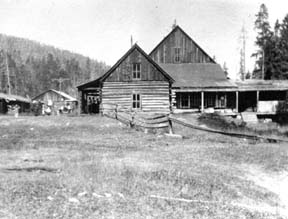
Karl and Adella Just homesteaded on Pole Creek in the Fraser River Valley in 1896. Della was the daughter of Henry Lehman, who had, himself, homesteaded on the upper Grand River about 1880. Karl and Della worked hard, adding to their property until by the late twenties, they had the largest holding in the valley. This lovely ranch was where Snow Mountain Ranch is now, and their log home still stands there even today. Their several children homesteaded in their own rights. Della and her son Alfred had what is known as the Rowley homestead, (now part of the Y-Camp) as well as what currently is the Winter Park Highlands. Son Rudy and his wife Clarabelle ranched part of the original Just property on Pole Creek where they watched over his mother. Another daughter married one of the Daxton boys and their spread was on Crooked Creek. Until the 1950's, just beyond Tabernash on the north side of the highway at the foot of Winter Park Highlands stood one of the original log homes of this family. In fact, this house appeared in a 1952 movie called "On Dangerous Ground", starring Ida Lupino, Robert Ryan, and Ward Bond. It was torn down some years later and a modern house built there. Life was hard for ranching pioneers, perhaps hardest of all for the women, for they worked in the fields and of course, did all the work of the house as well as much of the garden work. Little Della raked hay during the season, hoed gardens, hauled water, fished, sewed, and cooked. She was tough. The bright spots were when rare visitors stopped by, or as the population increased, dances were held in one town or another. It was a given that the Just home, like those of most pioneers, had no indoor plumbing. Nobody expected it and nobody complained. However, by 1957, Della Just was in her nineties. Karl was long gone. Her children decided that she should have indoor plumbing after all these years, and they heard that young Dwight Miller had a brand new backhoe. When they called, Dwight was pleased at the thought of doing such a useful job. He brought his machine out to the ranch and prepared to get to work. He discovered, however, that there was disagreement on this bright idea. Della thought the notion was silly. "I've lived all these years with an outhouse and I don't see any reason at all to change!" Back in those days, temperatures were very much colder than those currently expected. Forty and fifty degrees below zero were not unusual at all. But that old lady didn't mind this. (No doubt, there were chamber pots available for the worst weather.) Della's children, themselves no longer young, won out, and Dwight dug the trenches and the septic tank hole and laid the pipes. We never heard whether Della got used to such luxury or not, but we know that Rudy and Clarabelle agreed that moving into the modern world was a good idea!
|
| Rundell & French - Two families of the Sheephorn |
Rundell & French - Two families of the Sheephorn
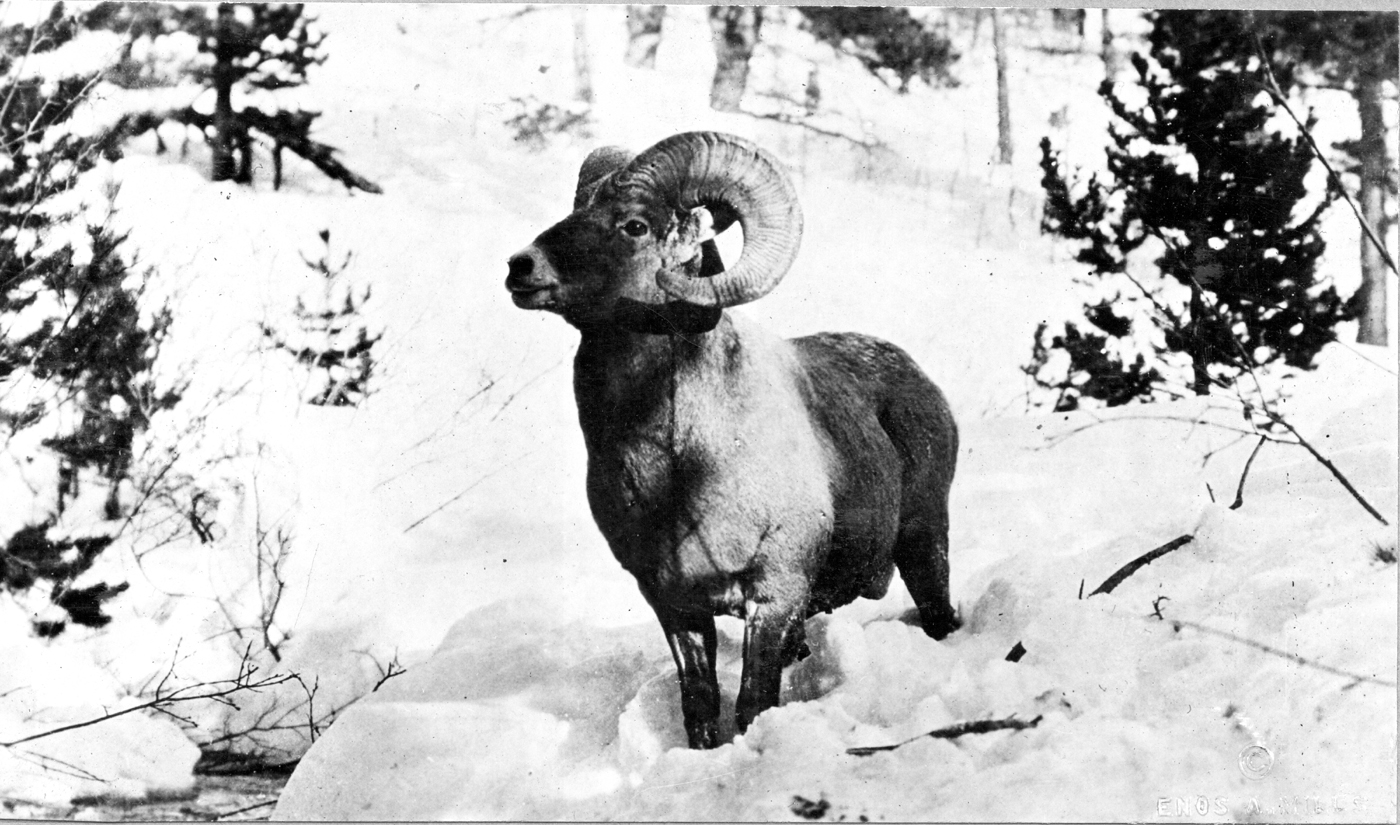
October 2009 Their three children were born here, Ernest, named after the brother who died, Marie, and Helen. Clarence worked very hard, ranching in the summer and cutting logs in the winter. The young folks were thrifty. In 1908, Clarence sold his homestead to a Swiss newcomer and bought land above his original site. By 1912, Clarence and Phoebe built a fine three-story house, complete with beautiful hardwood floors. It was wonderful place to raise the children. "This will surely be our home forever!" |
| Sheriff |
Sheriff
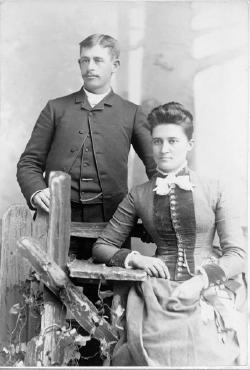
One of the oldest brands in Colorado still in use by the same family is the Bar Double S brand of the Sheriff Ranch near Hot Sulphur Springs. The current owners of the ranch are John Brice and Ida Sheriff. In 1863, Matthew Sheriff of Keithsburg, Illinois came to Colorado to search for gold in the California Gulch, near where Leadville would be established. Mathew was dismayed by the gray mineral which consistently clogged the gold sluice, and gave up on his dreams of instant wealth to return to Illinois. |
| Sir St. George Gore |
Sir St. George Gore
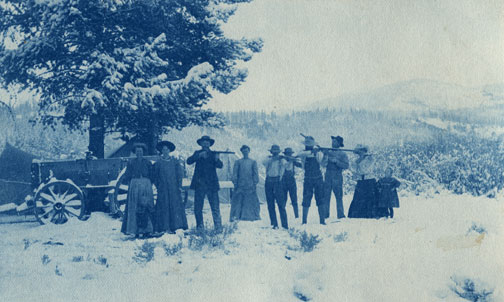
Sir St. George Gore was born in 1811 in County Donegal, Ireland, heir to an Irish baronetcy and was often referred to as Lord Gore. He was educated as an aristocrat, never married, and never held public office. He staged an expensive and expansive “American hunt,” leaving Westport, Missouri on June 6, 1854, with plans to hunt in the southern Rockies. After spending some time at Fort Laramie, he arrived inMiddle Park. His guides were Joseph Chattillon and Jim Bridger. Gore had a entourage of 40 workers, 25 wagons, 24 mules, 112 horses , 3 milk cows and 14 dogs! Loving his luxury, he slept in a brass bed, had nightly hot baths, and dines on superb food served on a lace tablecloth set with fine silver and crystal. He often invited Bridger, who was illiterate, to dinner and awakened in the guide an interest in Shakespeare, which lead to the frontiersman hiring a boy to read the bard's plays to him. Described as "a good shot at rest but rather poor offhand" he nevertheless claimed to have killed 2,500 buffalos, 40 grizzly bears and countless deer, elk and antelope. Bridger led Gore to West Grand County, to the pass, range, and canyon that now bear his name. The Indians were shocked at the expedition's wanton slaughter of every game animal in sight. The expedition did not end until sometime in 1857, when Gore returned to Ireland and relative obscurity. Not even a portrait remains of the infamous poacher. |
| Skiing Legends Horace Button and Barney McLean |
Skiing Legends Horace Button and Barney McLean
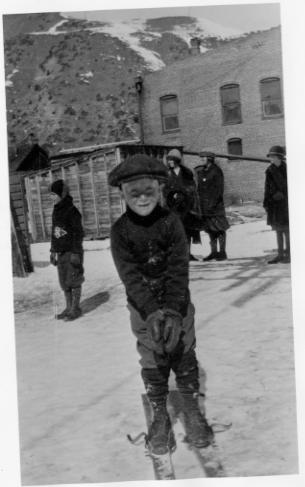
Horace Button was 10 years old when he saw the ski jump competition at the 1911 First Annual Hot Sulphur Springs Winter Sports Carnival. A railway man noticed that Horace was spellbound. The man asked Horace what he wanted to be when he grew up, to which Horace replied, “I want to be a ski jumper like Carl Howelsen.” The seed had been sown, and Howelsen taught Horace the skills of skiing. Barney McLean of Hot Sulphur Springs, became a champion following in the "ski boots" of Mr. Button. Horace would be waiting at the ski hill every afternoon, when school hours were over and he and Barney would schuss the mountain together. Barney was a 9-time national champion, and a 3-time Olympian. In 1948 he was Captain of the men’s alpine ski team that competed at St. Moritz, Switzerland. Horace Button continued to advise ski techniques to students of East and West Grand School Districts, helping them compete at the university or Olympic level. They were; Dale Thompson, Wes Palmer, Zane Palmer, Landis Arnold, Todd Wilson, Kerry Lynch, Tim Flanagan, and many more. Horace coached 12 national champions. Horace also was an accomplished artist. His specialty was carton ski scenes. Tim Flanagan honored Mr. Button for his work with local youths and created the Horace Button Ski Foundation. Horace Button, Jim Harsh, Barney McLean, and Carl Howelsen have been inducted into the Colorado Ski Hall of Fame. Barney McLean and Carl Howelsen are honored at The National Ski Hall of Fame. The picture on the right is of Barney McLean at age 4, wearing a pair of skis his dad made for him. The photo was taken in Hot Sulphur Springs. |
| Smiths of the Blue River |
Smiths of the Blue River

Frank John Smith was born October 5, 1852 in Granby, New York. He married Elizabeth Olive Sanders, who was born in 1860 in Hannibal, New York. They were married in 1878 in Hannibal and had two children Albert and Lelah. Albert died as an infant in 1881. In 1880 Frank homesteaded his ranch close to the Blue River and sent for his wife and baby daughter who came West by train to Dillon in the spring of 1883. |
| Stafford Family |
Stafford Family

James "Jimmy" M. Stafford was born in 1849 in Wexford Ireland. Jimmy immigrated to Leadville in the 1870's to work in the booming silver mines. In Leadville, he met and married Deborah Helen Acey (born 1846 in Trenton New Jersey) in 1880. In the 1880's the couple moved to Dillon and then homesteaded the Stafford Ranch on the Blue River at Spring Creek Road. Jimmy built their home by hand carrying logs from Green Mountain. They had one son, Frank Elmer Stafford, born in 1886. Jimmy and Deborah also operated the stage stop, boarding house and saloon called the "Halfway House" between Kremmling and Dillon on Highway 9. It remained in operation until the stage lines ceased in the early 1900's and the buildings were dismantled in the 1940's.
|
| Stephen Bradley |
Stephen Bradley
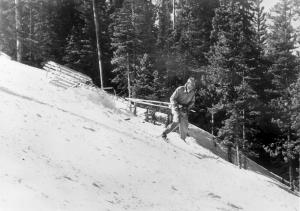
Article contributed by Karen Wischnack
Born to a Wisconsin doctor in Chicago November 12, 1916 was one of seven skiing sons by the name of Stephen J. Bradley. His talents in skiing showed up at a very early age. By the time he was attending Dartmouth College his talents were apparent and was a top competitive skier. He skied in the slalom, downhill, jumping and langlauf while on the college's team. Steve then was called to serve his country during the World War II Army service. After his discharge he then attended and coached skiing at Colorado University.
In 1950 Steve became Winter Park's executive director. During his employment at Winter Park he guided it from a four rope tow/three T-bar local ski area to a major resort of 770 acres with 13 chair lifts. His brilliance in design led to the Balcony House, the Base Lodge which was one of the first ski area structures to utilize solar heating, the restaurant in the midway proved to be a model for the "scramble" system of food service and then there's the Mary Jane section of Winter Park which was another one of his talents.
Stephen was given the name "Father of Slope Grooming" in 1952 when he then invented the famous Bradley Packer-Grader when experimenting with slope grooming. The invention was a one man gravity-powered slope grooming device which revolutionized the ski maintenance industry. Nick-named "the Purple People Eater". This machine was a mogul-cutting snow groomer that was 5-foot-wide corrugated culvert that a skier would drag down hill or as they said " A hardy mountain crewman" who risked his life by being devoured by the spinning rotor. As skiing became more popular, skiers started demanding that the slopes be groomed. Nature was no problem but not everyone wanted to ski moguls. This Bradley Packer was a way to reduce the mogul's and keep snow on the trails by flattening the snow. "It was a pretty scary thing" supervisors claimed. Grooming was soon transferred to a line of tracked vehicles now known a "Snowcats".
Stephen served as President of the NSAA (National Ski Areas Association) and helped organize Colorado Ski Country USA and the Colorado Passenger Tramway Safety Board before his death in Longmont November 13, 2002. You can find him as an honored member of the Colorado Ski Hall of Fame and in the National Ski Hall of Fame.
|
- ‹ previous
- 5 of 7
- next ›









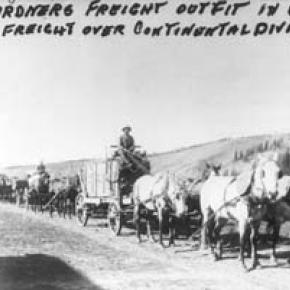

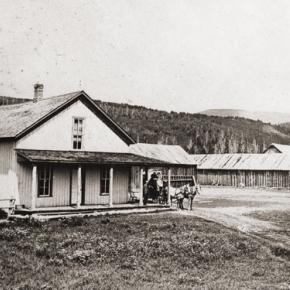
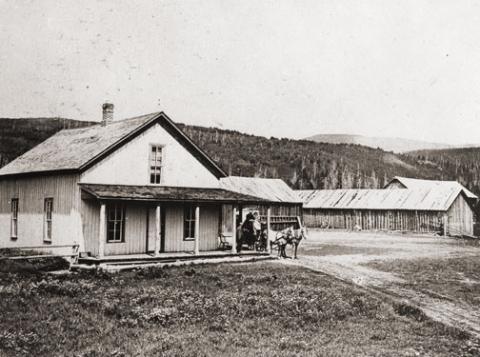
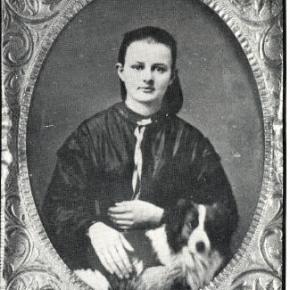

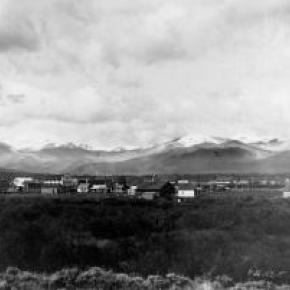
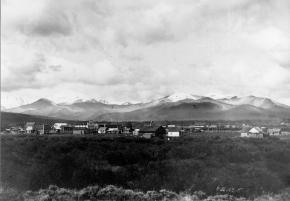
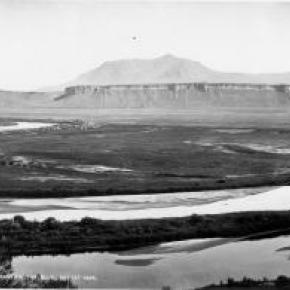
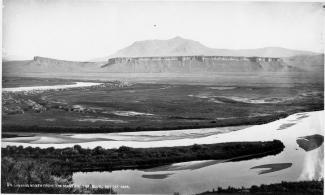
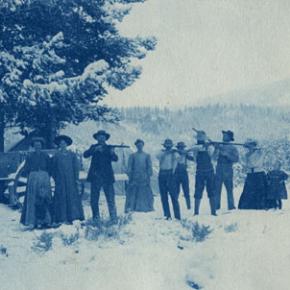
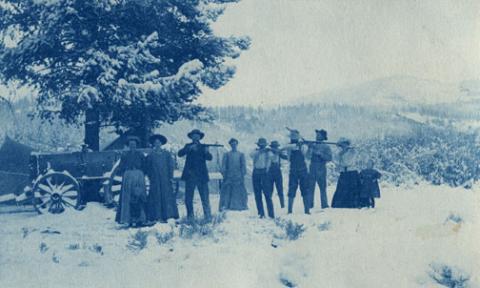

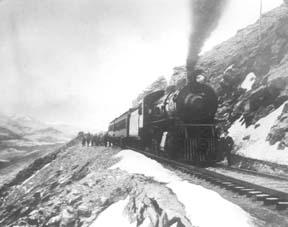
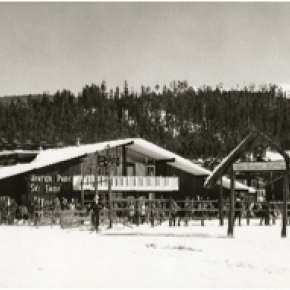
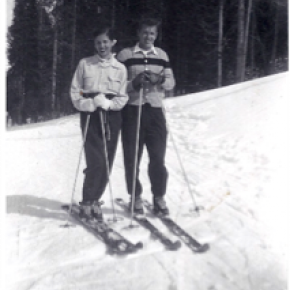
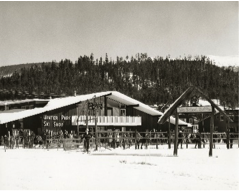 ,
, 